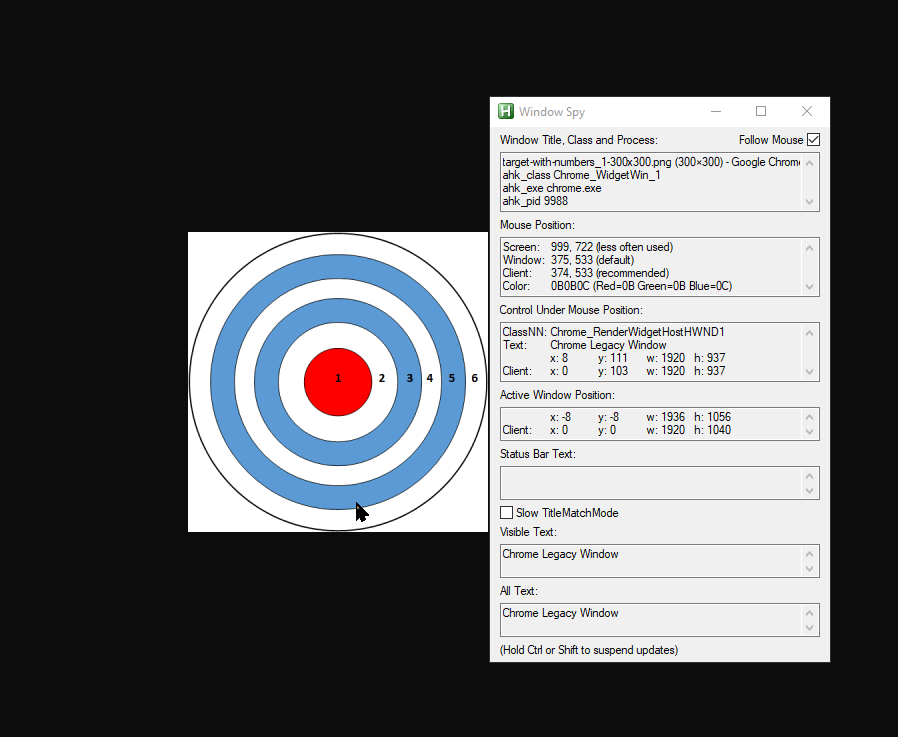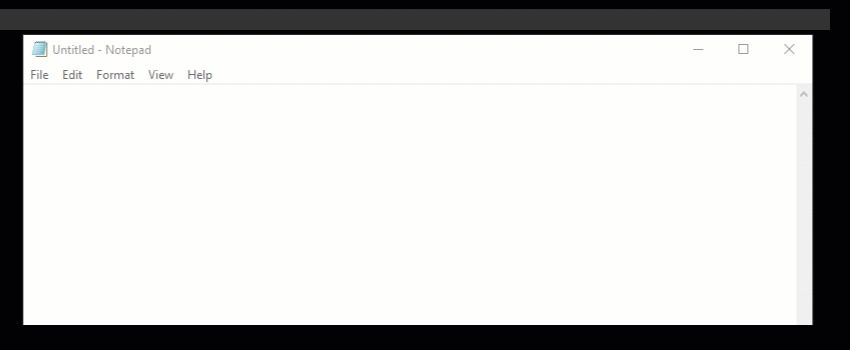Automating repetitive tasks can be a game-changer in your daily routine, especially when you’re juggling multiple responsibilities. Enter AutoHotkey (AHK), a versatile tool designed to streamline your workflow through automation.
This comprehensive guide will introduce you to the basics of script creation and execution using AutoHotkey. You’ll also delve into advanced concepts like hotkeys and variables, empowering you to craft custom AHK scripts tailored to your needs.
Are you ready to transform your workday with AutoHotkey? Let’s get started and unlock the power of automation!
Getting Started with AutoHotkey
Before we dive into scripting, let’s ensure you have everything you need for this hands-on tutorial:
- A computer running Windows 10.
- AutoHotkey installed and ready to go.
Understanding AutoHotkey: A Brief Overview
AutoHotkey is more than just a scripting tool; it’s a free, powerful scripting language for Windows that lets you automate a wide range of tasks. From remapping keyboard keys to creating complex macros, AutoHotkey makes it all possible.
Since its inception in 2003 by Chris Mallett, AutoHotkey has evolved significantly, supported by an active community and numerous resources for beginners. The versatility of AutoHotkey makes it popular among various users, including:
- Gamers creating custom macros to enhance gameplay.
- Developers automating routine tasks or crafting shortcuts.
- System administrators streamlining their workflows.
AutoHotkey also offers the convenience of portability. You can combine your scripts with the AutoHotkey executable to create a standalone application. This portable approach is incredibly handy for use across multiple computers without the need for individual installations.
Carry AutoHotkey on a flash drive and have your custom scripts readily available wherever you go.
Is AutoHotkey Trustworthy?
When it comes to safety, AutoHotkey is a reliable tool. However, it’s not uncommon for some antivirus programs to misidentify AHK scripts as potentially harmful. This is usually due to the nature of automation scripts and their capabilities.
If your antivirus software flags an AutoHotkey script, you can whitelist your scripts to prevent this issue. Additionally, reporting any false positives to your antivirus vendor helps improve their detection algorithms.
Creating Your First AutoHotkey Script
Now that you’re acquainted with AutoHotkey, let’s create your first script. We’ll begin with a simple “Hello World” script, a perfect starting point for understanding AutoHotkey’s scripting language.
1. Start by creating a project folder on your Desktop. In this guide, the folder is named /ATA.
2. Navigate to the folder in File Explorer. Right-click in an empty area, choose New -> AutoHotkey Script, and name your script, such as HelloWorld.ahk.

Your newly created AutoHotkey script, HelloWorld.ahk, should now appear in your folder, ready for scripting!

3. Open the HelloWorld.ahk file in a text editor of your choice. Initially, it’s a blank slate, ready for you to start scripting in AutoHotkey.
As you progress through this tutorial, keep working on the same script (HelloWorld.ahk) without removing its basic structure.

4. Add the following AutoHotkey code at the bottom of the HelloWorld.ahk file. This script will bind a simple message box to the Ctrl+K hotkey combination. After adding, save and close the file.
This code creates a MsgBox displaying “Hello World! This sample provided by ATA!!” when you press Ctrl+K (^k::) on your keyboard.
^k::
MsgBox, Hello World! This sample provided by ATA!!
ReturnChoose a key combination that doesn’t conflict with existing shortcuts. For instance, Alt+Tab is commonly used by Windows to switch between applications, so it’s not recommended.

5. Right-click on the HelloWorld.ahk file and choose Run Script from the context menu to execute your AutoHotkey script.
Ensure that the default application for AHK scripts, like Notepad, is used for editing and not for executing scripts, or the ‘Run Script’ option won’t appear in the context menu.

Once the script is running, you’ll notice the AutoHotkey icon (a green square with the letter ‘H’) in your system tray. This indicates your script is active and functioning correctly.

6. Test the functionality of your script by pressing the Ctrl+K hotkey. A message box with your custom message should appear.

7. Now, let’s modify the HelloWorld.ahk script. Replace the previous code with the following, which captures the mouse cursor’s position and displays it in a MsgBox. Additionally, it shows a ToolTip with custom text near the cursor.
Save and close the file after adding this new script.
^K::
MouseGetPos, xpos, ypos
MsgBox, The cursor is at X%xpos% Y%ypos%.
ToolTip, Hello World! This sample provided by ATA!!, xpos, ypos ReturnToolTip in AutoHotkey is a versatile feature that displays a brief message near the mouse cursor, enhancing user interaction in GUI-based scripts.

8. To apply your changes, right-click on the AutoHotkey icon in the system tray and choose Reload This Script. This step is crucial for ensuring the updated script takes effect.
Always remember to reload your scripts after making changes to ensure you’re working with the most current version.

9. Now, activate your script by pressing the Ctrl+K hotkey. You should see the tooltip displaying the message beside the mouse cursor and a message box showing the cursor’s location.

Effective Use of Comments in AutoHotkey Scripts
Creating your first AutoHotkey script is exciting, but it’s crucial to make your code clear and understandable. Comments in AutoHotkey scripts are essential for adding context and explanations, making your scripts easier to read and maintain.
Comments are ignored by the script interpreter but are invaluable for collaboration and future reference. In AutoHotkey, comments begin with a semicolon (;) and extend to the end of the line. They can be placed above or inline with commands and functions.
Remember to add a space before the semicolon when placing comments inline with commands. This prevents the AutoHotkey interpreter from mistaking your comments as part of the command, avoiding errors.
; Example of a comment above a command
MsgBox, Hello, world!
MsgBox "Hello, world!" ; Example of an inline commentTo practice adding descriptive comments in AutoHotkey scripts:
1. Edit your HelloWorld.ahk file again. Replace your existing code with the below script that includes comment lines. Save your changes and close the file.
; Demonstrating the use of comments in AutoHotkey scripts
; This sets Ctrl+K as a hotkey (Ctrl is represented by ^)
^K::
; Send command types "Hello" in the active window (like Notepad), followed by Enter
Send Hello {enter}
; Pauses the script for one second (1000 milliseconds)
Sleep 1000
; End of script example with comments
Send Holla {enter} ; Types "Holla" to the active window.
Sleep 1000 ; Waits one second before continuing.
Send Bonjour ; Sends the text "Bonjour" to the active window.
Return ; Ends the script.2. To implement your script updates, reload the HelloWorld.ahk script.
3. Execute the updated script by pressing Ctrl+K. The script will now sequentially print “Holla” and “Bonjour” with a one-second delay, demonstrating the effect of your comments.

Temporarily Disabling Code in AutoHotkey Scripts
While scripting with AutoHotkey, sometimes you need to disable sections of your code temporarily. This could be for testing specific parts of a long script without running the entire thing.
Instead of adding a semicolon to each line, AutoHotkey offers a more efficient method. The /**/ comment style allows you to disable entire blocks of code easily. This style comments out everything between /* and */, making it ignored by the interpreter.
1. Open the HelloWorld.ahk file and use the /**/ comments to disable a specific code block. Save the file after making these changes.
; Ctrl+K hotkey setup
^K::
Sleep 2000 ; Pauses for two seconds
/* Disabled code block
Send Hello {enter}
Sleep 1000
Send Holla {enter}
Sleep 1000
*/
Send Bonjour ; Only sends "Bonjour"
Return ; Ends the script
2. Reload the HelloWorld.ahk script for the changes to take effect.
3. Test the script by pressing Ctrl+K. The script will only execute the “Bonjour” command, confirming the disabled code block is being ignored.

Mastering the Sleep Command in AutoHotkey Scripts
Send Holla {enter} ; Types "Holla" to the active window.
Sleep 1000 ; Waits one second before continuing.
Send Bonjour ; Sends the text "Bonjour" to the active window.
Return ; Ends the script.2. After updating your script, be sure to reload the HelloWorld.ahk file to apply the new changes.
3. Test your script by pressing Ctrl+K. The script will sequentially type “Holla” and “Bonjour” with a delay between them, demonstrating the practical use of AutoHotkey commands and comments.

Utilizing the Sleep Command in AutoHotkey Scripts
The Sleep command in AutoHotkey scripts is an essential tool for controlling script timing and execution. It allows you to introduce a delay, measured in milliseconds, giving your scripts the flexibility to wait for certain actions or processes to complete before continuing.
Here’s how to implement the Sleep command effectively:
; The syntax of the Sleep command
Sleep, TimeInMilliseconds
The time value for the
Sleepcommand can range from 1 to 2147483647 milliseconds, offering a wide spectrum for script pauses.
1. Open your HelloWorld.ahk script in a text editor. Replace your previous code with the following, then save and close the file. The updated script demonstrates how to use the Sleep command to delay script actions.
This example shows how to open the command prompt with Ctrl+K and display a message after a three-second delay, showcasing the practical use of the Sleep command in real-world scenarios.
; Assigning hotkey Ctrl+K
^K::
; Open command prompt
Run, cmd.exe
; Delay of three seconds
Sleep, 3000
; Displaying message
MsgBox, Your command-line tool is ready!
; End of script
Return
2. After saving your changes, reload the script to see the new functionality in action.
3. Test the script by pressing Ctrl+K. The command prompt will open, followed by a three-second delay, and then the message box will appear, confirming the successful implementation of the Sleep command.

Generating Random Numbers with AutoHotkey’s Random Command
The Random command in AutoHotkey is perfect for situations where you need to generate a random number within a specific range. Whether for games, decision-making, or any other application, this command adds a layer of unpredictability and fun to your scripts.
Here’s a practical example:
Imagine you have ten conference rooms and want to randomly pick one for a meeting. The Random command can effortlessly make that choice for you.
The syntax for the Random command is simple and flexible:
Random, OutputVar, Min, Max
To see the Random command in action:
1. Open the HelloWorld.ahk file and replace the existing code with the script below. This script will randomly select a number between 1 and 10 (representing your conference rooms) and display it when you press Ctrl+K. Save and close the file after making the changes.
; Sets Ctrl+K hotkey
^K::
; Randomizes a number from 1-10 and store the result to rand variable
Random, rand, 1, 10
; Prints a message with the randomized number in a message box
MsgBox, Room %rand% is chosen for the meeting.
; Stops the script
return
2. After saving the script, remember to reload the HelloWorld.ahk file to apply these changes.
3. Press Ctrl+K to execute your updated AutoHotkey script. A message box will appear showing the randomly chosen room number, verifying the functionality of the Random command.

Utilizing the PixelSearch Command in AutoHotkey
The PixelSearch command in AutoHotkey is a powerful tool for searching specific pixels or colors on your screen. It can be incredibly useful for tasks like automating game actions, finding specific elements in an application, or any scenario where pixel detection is necessary.
Let’s explore how to use the PixelSearch command effectively:
PixelSearch, OutputVarX, OutputVarY, X1, Y1, X2, Y2, ColorID, Variation, ModeBefore using PixelSearch, it’s important to identify the specific pixel or color you’re targeting. Tools like Window Spy can help you find the RGB values of any screen pixel.
1. Open Window Spy by right-clicking the AutoHotkey icon and selecting it from the context menu. Use it to identify the RGB values of your target pixel.

2. Move your cursor to the target pixel. Window Spy will display the RGB values, which you’ll use in your AutoHotkey script.

; Sets Ctrl+K hotkey
^K::
; Locate a specified pixel
PixelSearch, Px, Py, 0, 0, @DesktopWidth, @DesktopHeight, AA0000, 3, Fast
if ErrorLevel ; If the pixel is not found, print an error message
MsgBox, That color was not found in the specified region.
else ; If the pixel is found, send a mouse click on the specified pixel location
MouseClick, left, %Px%, %Py%
; Waits for two seconds, then print a message
Sleep 2000
MsgBox, Your enemy has been destroyed!
; Stops the script
Return
4. Reload the HelloWorld.ahk script to activate the new functionality.
5. Press Ctrl+K to execute the script. If the specified pixel is found, the mouse cursor will move to that location and a message will display.

Interactive Scripts with AutoHotkey’s InputBox Command
AutoHotkey’s InputBox command introduces a new level of interaction in scripts, allowing you to prompt for and use user input. This command is essential for creating scripts that require information from the user, enhancing the flexibility and utility of your AutoHotkey scripts.
The InputBox command is versatile, used for a variety of applications from simple data entry to more complex user interactions.
Here’s how you can use the InputBox command:
InputBox, OutputVar, Title, Prompt, HIDE, Width, Height, X, Y, Locale, Timeout, DefaultTo create a script that interacts with the user through an input dialog box:
1. Replace the code in your HelloWorld.ahk file with the script below, which uses the InputBox command. Save and close the file after these changes. This script demonstrates how to capture user input and use it within your AutoHotkey script.
; Sets Ctrl+K hotkey
^K::
; Creates an input box dialog
InputBox, UserName, Your Name, Please enter your name., , 640, 480
if ErrorLevel ; If there's an error in input
MsgBox, Oops, something went wrong!
else ; Display user's name
MsgBox, Your name is "%UserName%!"
; Ends the script
Return
2. Reload the HelloWorld.ahk script to incorporate the new changes.
3. Press Ctrl+K to launch the script. An input dialog box will prompt you for your name. After entering your name and clicking OK, a message box will confirm the input, as shown below.

Automating Keystrokes with AutoHotkey’s Send Command
The Send command in AutoHotkey is a powerful feature for automating keystrokes. Whether you’re filling out forms, entering repeated text, or automating other keystroke-based tasks, the Send command makes these tasks effortless.
Here’s how to utilize the Send command:
Send keysThis command can simulate various keystrokes, including special keys like the Windows key or Alt key.
1. Update your HelloWorld.ahk file with the script below. This script will send specific keystrokes when executed. Save the file after updating the script.
The script sends the text “Sincerely,” followed by an ENTER keystroke, and then “ATA”.
^K::
Send Sincerely, {enter} ATA
Return
2. Reload the HelloWorld.ahk script to make sure the latest changes are active.
3. Open a text editor and press Ctrl+K to see the Send command in action. The script will type “Sincerely,” press ENTER, and then type “ATA”.

Automating Mouse Clicks and Keystrokes with AutoHotkey
AutoHotkey simplifies the automation of repetitive tasks, such as keystrokes and mouse clicks, enhancing productivity and efficiency.
For example, if you need to keep an app active by clicking at random screen positions, AutoHotkey can automate this process through programmed keystroke sequences.
1. Edit your HelloWorld script, replace the code with the following lines, save the changes and close the file. This code automates left-clicks at random screen positions.
; Sets Ctrl+K hotkey
^K::
; Automated clicks for 1 million iterations
Loop 1000000
{
Random, RandomX, 869, 1049 ; Random X-coordinate
Random, RandomY, 135, 241 ; Random Y-coordinate
MouseClick, Left, %RandomX%, %RandomY% ; Automated click
Sleep 2000 ; Two-second pause
}
; Hotkeys to pause/resume the script
+^K::Pause2. Reload the script to apply the changes.
3. Press Ctrl+K to activate the script. It will perform random left-clicks on your app, as shown below. Press Shift+Ctrl+K to pause the script.

Developing an AutoHotkey GUI for Enhanced Interactivity
AutoHotkey’s GUI capabilities allow for the creation of user-friendly interfaces, making scripts more interactive and visually appealing.
Here’s how you can create an AutoHotkey GUI:
Gui, SubCommand, Value1, Value2, Value31. Use the Add SubCommand to incorporate different controls like text labels, edit fields, and buttons into your GUI. This enriches the user experience and functionality of your script.
Text– Adds labels for clarity.Edit– Creates input fields for user data entry.Button– Inserts buttons that trigger script actions upon clicking.
2. Replace your HelloWorld.ahk file with the following script to demonstrate a basic GUI with text, input field, and a button. Save and close the file after making these changes.
; Example AutoHotkey GUI creation
Gui, Add, Text,, Enter your name:
Gui, Add, Edit, vUserName
Gui, Add, Button, Default, Submit
Gui, Show, w200 h150, Sample GUI
return
; Button action
ButtonSubmit:
Gui, Submit
MsgBox, Hello %UserName%!
return
GuiClose:
ExitApp3. Reload the HelloWorld.ahk script. A GUI window will appear, allowing you to enter your name and see a greeting message upon clicking the ‘Submit’ button.
Enhancing Workflow with AutoHotkey: Automating Mouse Clicks and Keystrokes
AutoHotkey provides a seamless way to automate keystrokes and mouse clicks, streamlining your daily tasks and increasing efficiency.
Imagine needing to keep an application active through periodic mouse clicks. With AutoHotkey, you can automate this task easily.
1. Update your HelloWorld.ahk script with the following code. This script simulates mouse clicks at random screen positions, keeping your app active without manual intervention. Save and close the file after updating.
; Ctrl+K hotkey setup
^K::
; Loop for automated actions
Loop 1000000
{
Random, RandomX, 869, 1049 ; Random X-coordinate
Random, RandomY, 135, 241 ; Random Y-coordinate
MouseClick, Left, %RandomX%, %RandomY% ; Click action
Sleep 2000 ; Pause between clicks
}
; Pause/Resume hotkey
+^K::Pause2. Apply the changes by reloading the HelloWorld.ahk script.
3. Press Ctrl+K to start the automated clicking process. Observe how the script performs clicks at random locations every two seconds. Use Shift+Ctrl+K to pause the script.

Building an Interactive AutoHotkey GUI
AutoHotkey’s GUI capabilities allow for the creation of interactive, user-friendly interfaces, enhancing the user experience and expanding the script’s functionality.
Let’s explore creating a basic AutoHotkey GUI:
Gui, Add, ControlType, Options, Text1. Edit your HelloWorld.ahk script with the code below to create a GUI window. This GUI will include two input fields for the user’s first and last names and a button to submit the data. Save the changes and close the file.
; Ctrl+K hotkey for GUI
^K::
; GUI creation with text and edit fields
Gui, Add, Text,, First name:
Gui, Add, Edit, vFirstName
Gui, Add, Text,, Last name:
Gui, Add, Edit, vLastName
Gui, Add, Button, Default, OK
; Displaying the GUI
Gui, Show,, Simple Input Example
Return
; Actions upon clicking OK
ButtonOK:
Gui, Submit
MsgBox, You entered "%FirstName% %LastName%".
; Closing the GUI
GuiClose:
ExitApp2. Reload the HelloWorld.ahk script to see the new GUI in action.
3. Press Ctrl+K to open the GUI. Enter your first and last names, then click OK. A message box will display the entered names, demonstrating the GUI’s functionality.

Conclusion
AutoHotkey is a versatile tool that boosts productivity by automating tasks and enhancing user interfaces. Through this guide, you’ve learned to create custom hotkeys, scripts for automated actions, and interactive GUIs.
With these basics, you’re well-equipped to start exploring more complex AutoHotkey scripts. Experiment with different functionalities, like saving user input to a file or adjusting GUI dimensions, to tailor your scripts to your needs.
Embrace the power of AutoHotkey to transform your daily computing tasks into simple, automated processes!




